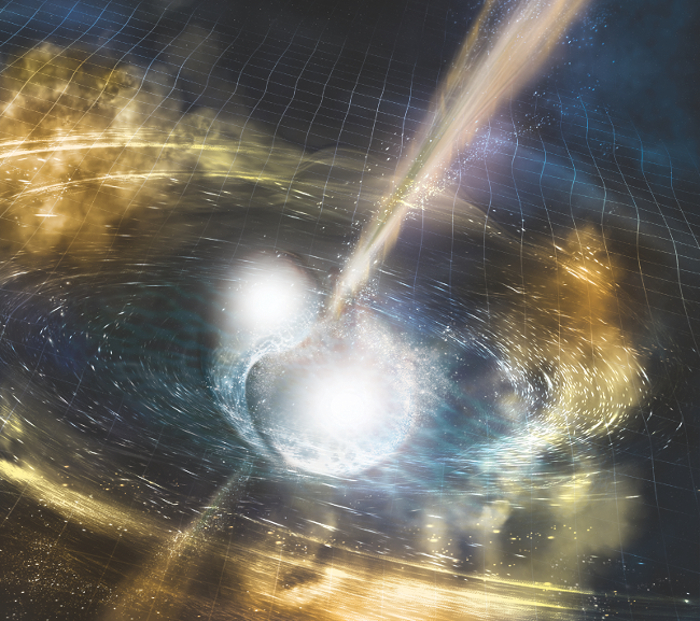
 Credit: A. Simonnet (Sonoma State); LIGO
Credit: A. Simonnet (Sonoma State); LIGO
Gold Metal
Gold is one of the most precious metals, highly prized throughout human history. Perhaps one reason it's so valued is that we're not really sure how nature makes gold. It's very difficult to make gold (and other heavy elements) through normal nuclear processing, the kind that occurs in the cores of stars, in supernovae and in other well-studied cosmic locations. Part of the difficulty is that a large reservoir of neutrons is required to create heavy metals like gold from simpler atomic nuclei. Neutron stars are, as the name implies, a good source of neutrons, so astrophysicists have speculated that perhaps violent mergers of neutron stars could create heavy, neutron-rich elements like gold. But until recently no one knew if neutron star mergers really happened. This all changed on August 17, 2017, after LIGO detected a slow gravitational wave event whose associated gamma-ray burst was detected by the Fermi and INTEGRAL Gamma-ray space observatories. This was the first direct detection of a merger of two neutron stars, in a galaxy far, far away. The image above is an illustration of what it might look like in the instant when two neutron stars merge. It's unclear how much gold was exactly created in this merger event, but followup observations have shown what appears to be evidence of significant amounts of gold, perhaps as much as an entire earth mass. At the distance of the merger, though, it's unlikely that the sudden appearance of this amount of gold will have much of an effect on the price of gold on earth, though we can't rule out the possibility that it could spur an intergalactic gold rush.
Published: February 18, 2018
<
HEA Dictionary ● Archive
● Search HEAPOW
● Other Languages
● HEAPOW on Facebook
● Download all Images
● Education ● HEAD
>

Each week the HEASARC
brings you new, exciting and beautiful images from X-ray and Gamma ray
astronomy. Check back each week and be sure to check out the HEAPOW archive!
Page Author: Dr. Michael F. Corcoran
Last modified Tuesday, 27-Feb-2024 10:15:18 EST


